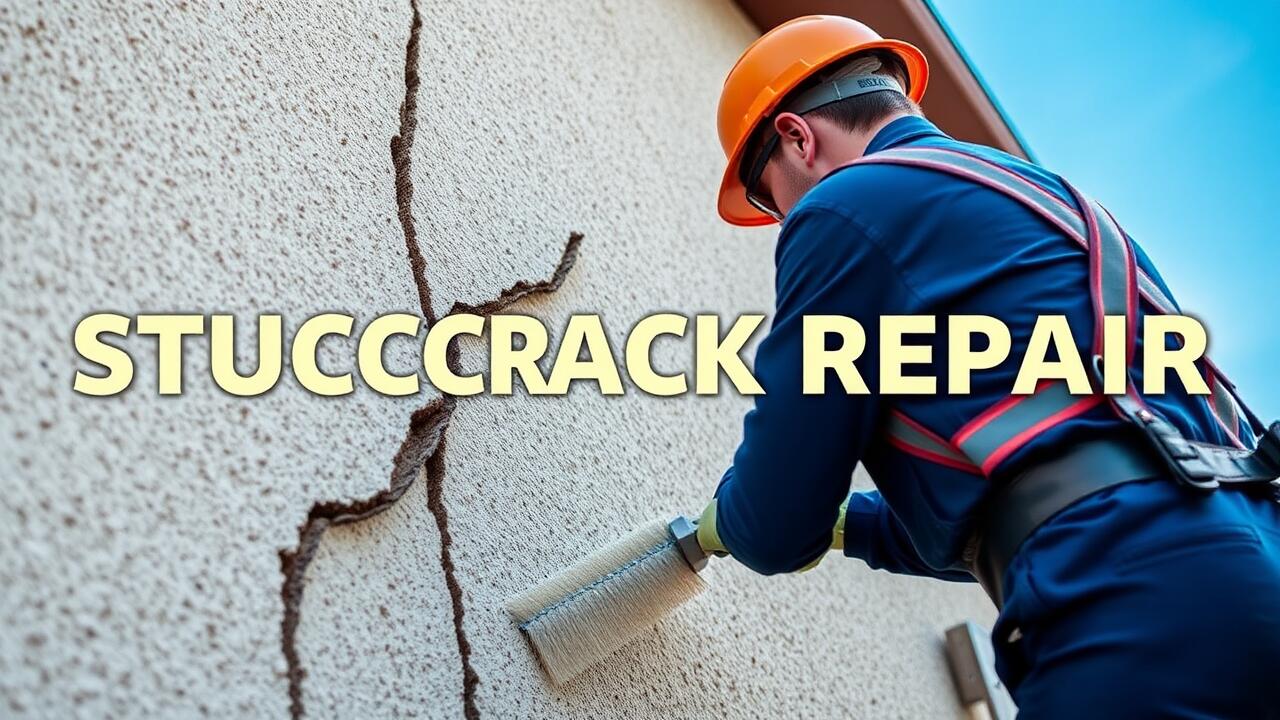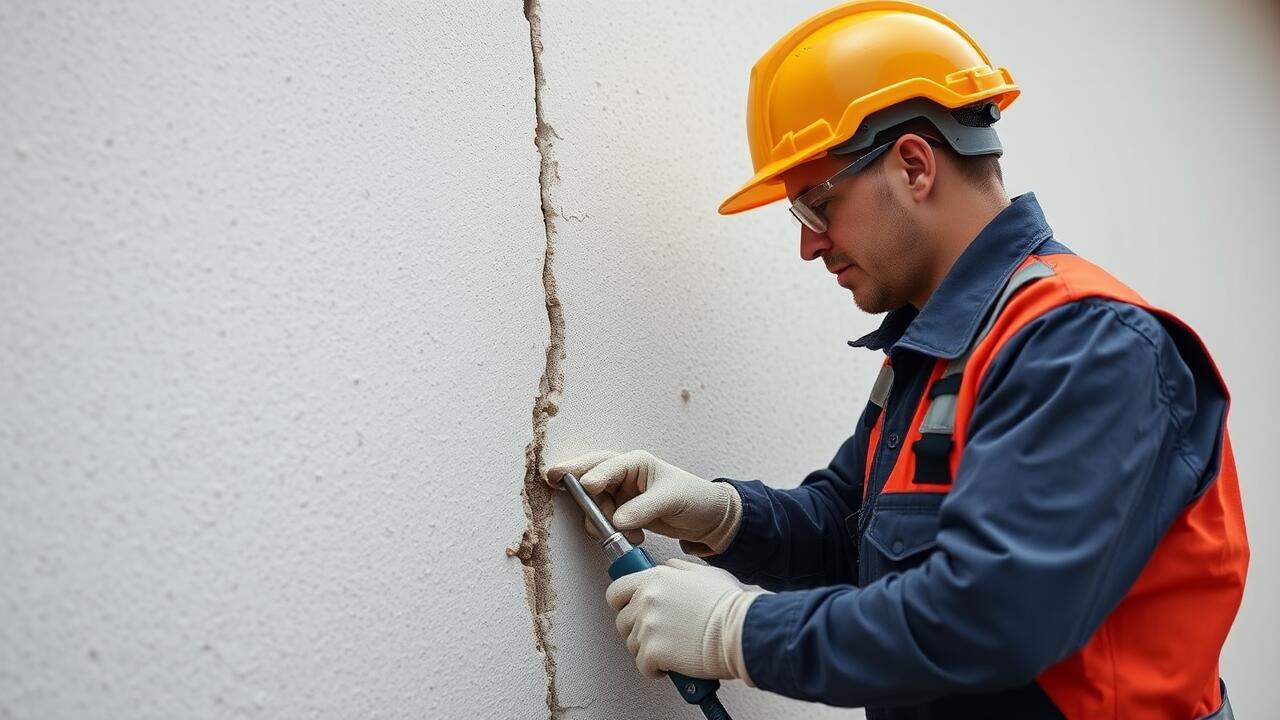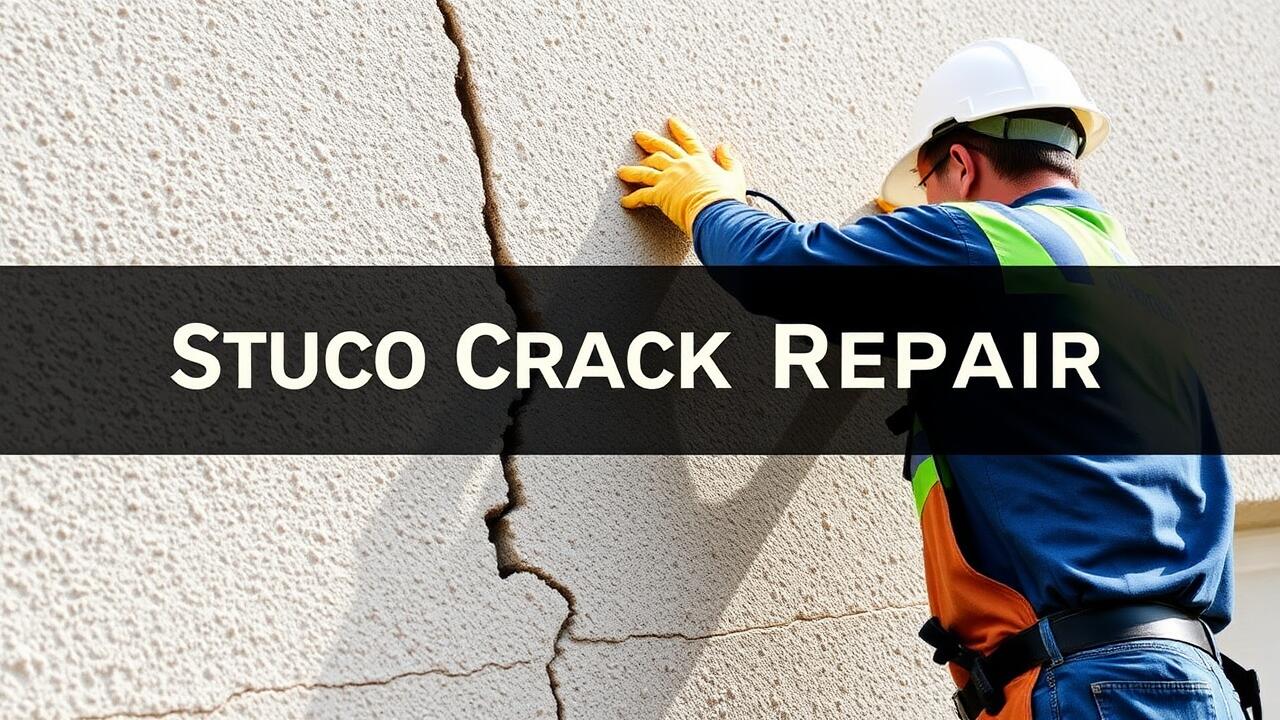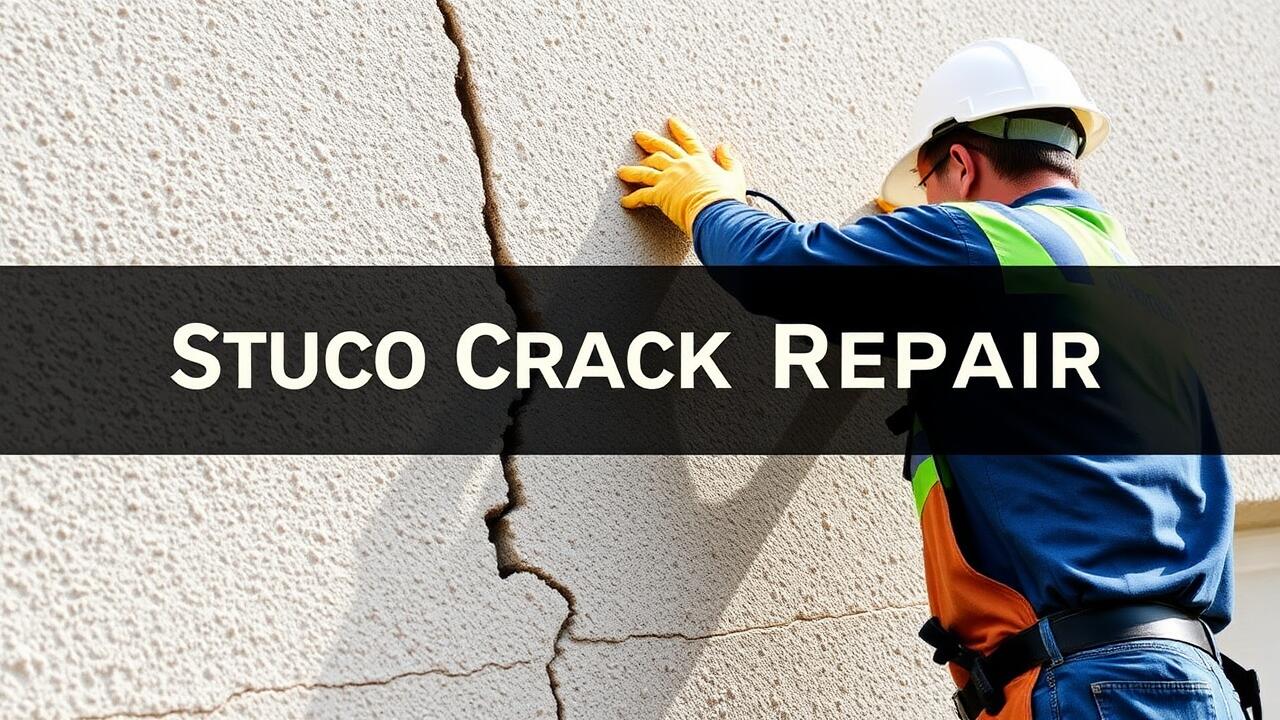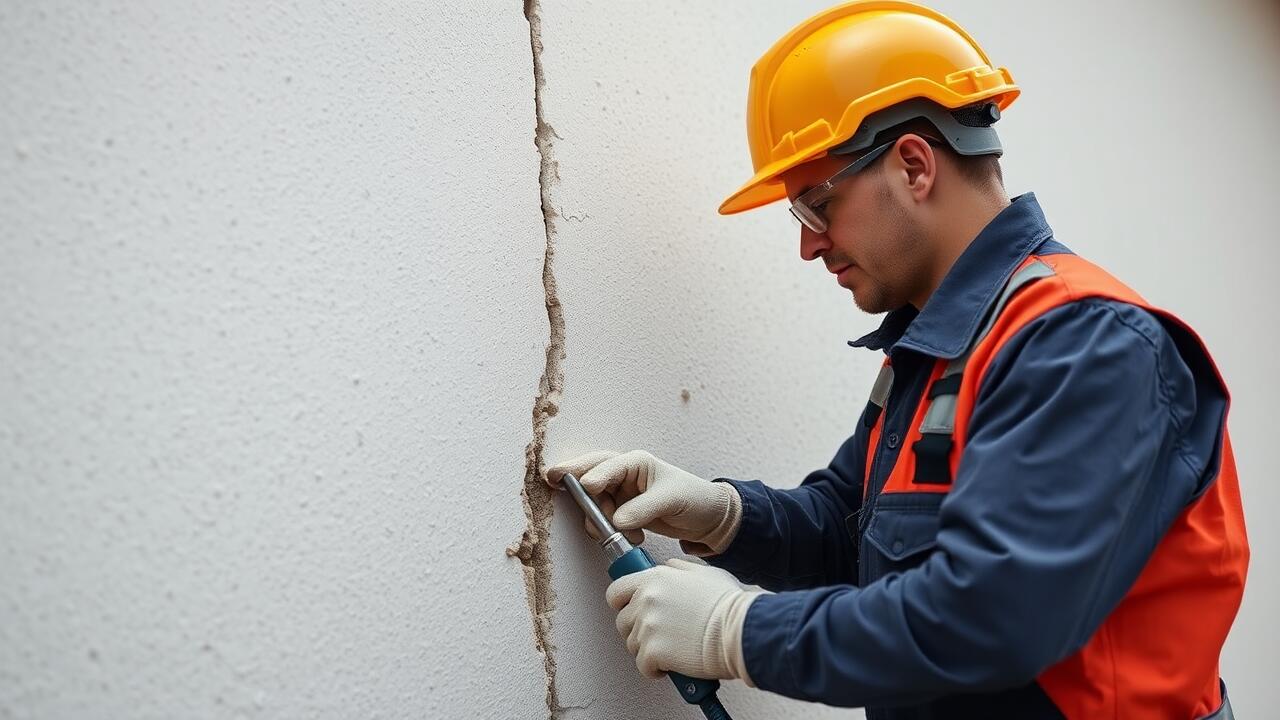
Repairing Larger Cracks
When dealing with larger cracks in stucco, it is essential to address the underlying issues before applying any repair material. Begin by cleaning the area around the crack to remove loose debris and dust. This preparation allows for better adhesion of the repair material. Using a chisel or a grinder, create a V-shaped groove along the length of the crack. This groove will help the new material bond securely with the existing structure, ensuring a lasting repair.
After creating the groove, it’s time to apply a suitable stucco mix. Many local suppliers offer pre-mixed solutions designed specifically for stucco crack repairs. For those unsure of where to find professional help, searching for “Stucco Crack Repair near me” can yield local experts who can assist with more extensive repairs. When applying the mix, ensure it fills the groove completely and is smoothed over to match the surrounding area. This approach provides a solid foundation for the next steps in the repair process.
Applying a Stucco Mix for Significant Damage
When dealing with significant damage, applying a stucco mix specifically designed for repairs can restore the integrity of your surface. Start by selecting a pre-mixed product that matches the existing texture of the stucco. Using a trowel, press the stucco mix into the crack, ensuring that it fills the void completely. Smooth out the surface with the trowel for an even application. If the crack is deep, consider applying the mix in layers, allowing each layer to cure before adding the next.
After filling the cracks, it’s important to blend the new stucco with the old surface. To achieve a seamless transition, use a sponge or brush to mimic the existing texture while the mix is still wet. Adding a small amount of the base color of the stucco can help match tones. If you’re searching for professional assistance, consider searching online for "Stucco Crack Repair near me" to find local experts who can ensure a flawless finish.
Texturing and Blending the Repair
To achieve a seamless finish after patching cracks in stucco, texture matching is essential. Start by examining the existing stucco finish. Different textures, such as dash, skip trowel, or smooth, require specific techniques to mimic. Consider using tools like a trowel, sponge, or textured roller to replicate the original surface accurately. A little practice may be necessary to ensure that the new texture blends well with the old.
Once the texture is applied, it’s important to consider the color. A color-matching process might involve using paint or a tinting agent in your stucco mix. This step ensures that the repaired area doesn’t stand out against the rest of the wall. For those uncertain about the process, searching for "Stucco Crack Repair near me" can lead to professionals who can ensure a perfect match and a flawless finish.
Techniques to Achieve a Seamless Finish
To achieve a seamless finish on your stucco repair, matching the existing texture is crucial. Begin by evaluating the original stucco surface, taking note of its pattern and granularity. Utilize appropriate tools such as brushes, knockdown knives, or trowels to replicate the texture on the patched area. If your area has a stippled finish, a sponge or brush can be effective. Experiment on a test surface if necessary to perfect your technique before applying it directly to the repair.
After you have created the desired texture, the blending process is essential to ensure the patch integrates fluidly with the surrounding wall. Consider using a paint sprayer or a spray bottle with water to lightly mist the surrounding area. This helps to soften the contrast between the old and new material. Once the patch is complete, allow sufficient drying time to minimize the appearance of any discrepancies between the repaired sections. For those seeking professional assistance, a quick search for "Stucco Crack Repair near me" can lead to skilled contractors who specialize in achieving seamless finishes.
Ensuring Proper Drying and Curing
Proper drying and curing are crucial steps in any stucco crack repair process. After the application of the patching material, it is essential to allow sufficient time for the mixture to set. This prevents issues like cracking or peeling, which can occur if the material is disturbed too soon. Environmental factors, such as temperature and humidity, also play a significant role in the drying process. Ideally, repairs should be made during dry weather conditions to minimize complications.
Monitoring the curing process is equally important. If repairs occur in hot or windy conditions, misting the area lightly with water can help maintain moisture in the patch. This practice encourages a stronger bond and reduces the risk of early cracking. If you're unsure where to start, searching for "Stucco Crack Repair near me" can connect you with local professionals who can offer guidance and assistance.
Best Practices for Allowing the Patch to Set
After applying a patch to a stucco surface, giving it sufficient time to dry and cure is essential for the integrity of the repair. Avoid any disturbances in the early stages of drying, as this can lead to cracks or improper adhesion. Ideally, the patch should be protected from direct sunlight and high winds, which can cause uneven drying. Covering the newly repaired area with a damp cloth or plastic sheeting can help maintain moisture levels and create a more stable environment for curing.
Monitoring the weather during the drying period is also crucial. Extreme temperatures or unexpected rain can negatively impact the repair process. If the conditions are unfavorable, it may be beneficial to postpone repairs until the weather stabilizes. For those seeking professional assistance, searching for "Stucco Crack Repair near me" can connect homeowners with local experts who can ensure the repair is done properly and effectively.
FAQS
What tools do I need to patch cracks in stucco?
You will need a chisel, wire brush, trowel, stucco mix, water, and a sponge for blending. Additional tools might include a spray bottle for moisture and a texture roller for finishing.
How can I determine if a crack in stucco is significant or minor?
Minor cracks are typically less than 1/8 inch wide, while significant cracks are wider, deeper, or show signs of movement. If cracks are accompanied by structural issues, consult a professional.
How long does it take for stucco patches to dry and cure?
Stucco patches generally take about 24 to 48 hours to dry, but full curing can take up to a few weeks depending on humidity and temperature. It's important to keep the patch moist during the curing process.
Can I paint over the stucco patch immediately after applying?
No, it's best to wait until the patch has fully cured before painting. This ensures better adhesion and a more uniform finish.
What should I do if the crack reappears after repair?
If a crack reappears, it may indicate ongoing structural issues or poor application. Assess the area for underlying problems and consider consulting a professional for a more comprehensive repair approach.
